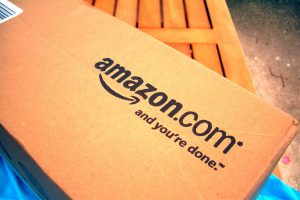Amazon: The Next Supercorporation?

In a year that has seen Amazon.com swallow Whole Foods, well, whole, there is no reason to believe the online giant won’t continue to eat up everything in its path.
The 23-year-old company finalized the $13.7 billion purchase of Whole Foods in August. In the meantime Amazon Web Services and Alexa voice computing continue to be popular, as do Prime memberships. That has resulted in continued growth for a company that was valued at $438 million when it went public in 1997, and is now worth $460 billion.
Fortune notes that Amazon accounts for 34 percent of all U.S. online sales, and quotes a report by the Wall Street firm Needham saying that that number could rise to 50 percent by 2021. Amazon’s stock price has similarly exploded; it is valued at $1,127, some 736 percent more than when the company went public two decades ago.
However, it’s not mere product sales that have made Amazon the company it is today. As the tech world expands into ever more corners of our lives, the Bezos empire is increasingly present, much like GE or AT&T in previous eras.
Amazon Web Services (AWS), a cloud computing platform popular with startups, is the biggest source of that growth. First offered in 2006, it now stands to accrue $10 billion a year, according to a 2016 New York Times report.
Prime is another driver of growth. Fortune, citing estimates by the Consumer Intelligence Research Partners (CIRP), reported that there were 65 million Prime members last year, though the Motley Fool put that number at closer to 80 million. For $99 a year they get free, rapid shipping and other discounts, and Amazon gets incredible loyalty in return; 80 percent of Prime members shop on the site at least once a month, according to eMarketer.
Alexa, the software for the Echo, a voice-activated device, could generate more than $11 billion in revenue by 2020, according to a note by the investment firm Mizuho — $4 billion from the Echo, the rest from Amazon transactions resulting from the device’s use.
While it would seem counterintuitive for Amazon to begin building brick-and-mortar stores — the site, after all, has led to the demise of many such places — the company has been dabbling in that venture since 2015, and according to a report earlier this year in the Denver Post had opened six stores, with six others on the way.
Ninety percent of retail shopping is still done offline, and by offering physical stores Amazon can reduce its shipping costs while giving customers the human shopping experience — the opportunity to discuss with others what they might be reading or buying and the chance to browse and make a purchase they might not have made online. Brand awareness and exposure to the possibilities of Prime are also factors.
The Whole Foods purchase is another example of Amazon expanding its horizons. Grocery shopping is a $675 billion-a-year business, and in 2016 only 12 percent of American shoppers bought their groceries online.
Amazon’s venture into this space has also been framed as an opportunity to connect with a particularly affluent client base — to glean data about the buying habits of such consumers and deliver (perhaps as soon as the need arises) the products they prefer.
Months before the Whole Foods purchase, the financial research firm Baird Equity Capital noted that Amazon is also poised to strike out in other new directions, like clothing, home and kitchen, health/beauty and office equipment/B2B. Combined with its expansion into the grocery space, these ventures represent a $1.7 trillion market share opportunity for the company, according to Business Insider.
Whether that makes it the modern-day equivalent of GE or General Motors remains to be seen. But what can be said with certainty is that while Amazon lags behind other tech companies in terms of profitability, CEO Jeff Bezos and Co. remain ahead of the curve when it comes to innovation and growth.
